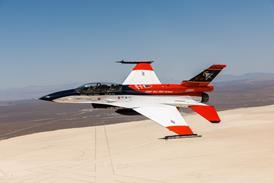NASA is studying a major change to its Moon mission plan to cut the time its spacecraft have to wait in low Earth orbit before setting off. Loitering in LEO presents challenges for cryogenic propellant storage and spacecraft energy budget.
A revised mission plan could see the Ares I launcher, carrying the Orion crew exploration vehicle, lift off before an Ares V cargo launcher takes the Earth departure stage and Altair lunar lander into space.
Under the current concept of operations, which involves launching the unmanned Ares V first, the EDS and Altair would loiter in LEO for up to 14 days. Launching the manned Ares I first could reduce the loiter time to four days.
"The LEO delivery orbit is a [222km circular orbit] at 28.5° [and] assumes an orbital decay to 185km during the 14-day loiter for CEV rendezvous and dock prior to trans-lunar injection burn," according to a November presentation by the Ares project office.
NASA had considered a 95-day loiter for its EDS and lunar lander. Under the Apollo programme, the manned spacecraft, departure stage and lander were launched together by the Saturn V rocket.
In an exclusive interview with Flight International on 14 December, NASA administrator Michael Griffin said he had been against launching astronauts on solid rocket motors. but the Ares I development data had convinced him otherwise. Underscoring his confidence are the 180 launches of the Shuttle SRM without anomaly or failure, proving it to be "reliable hardware".
Source: Flight International
















